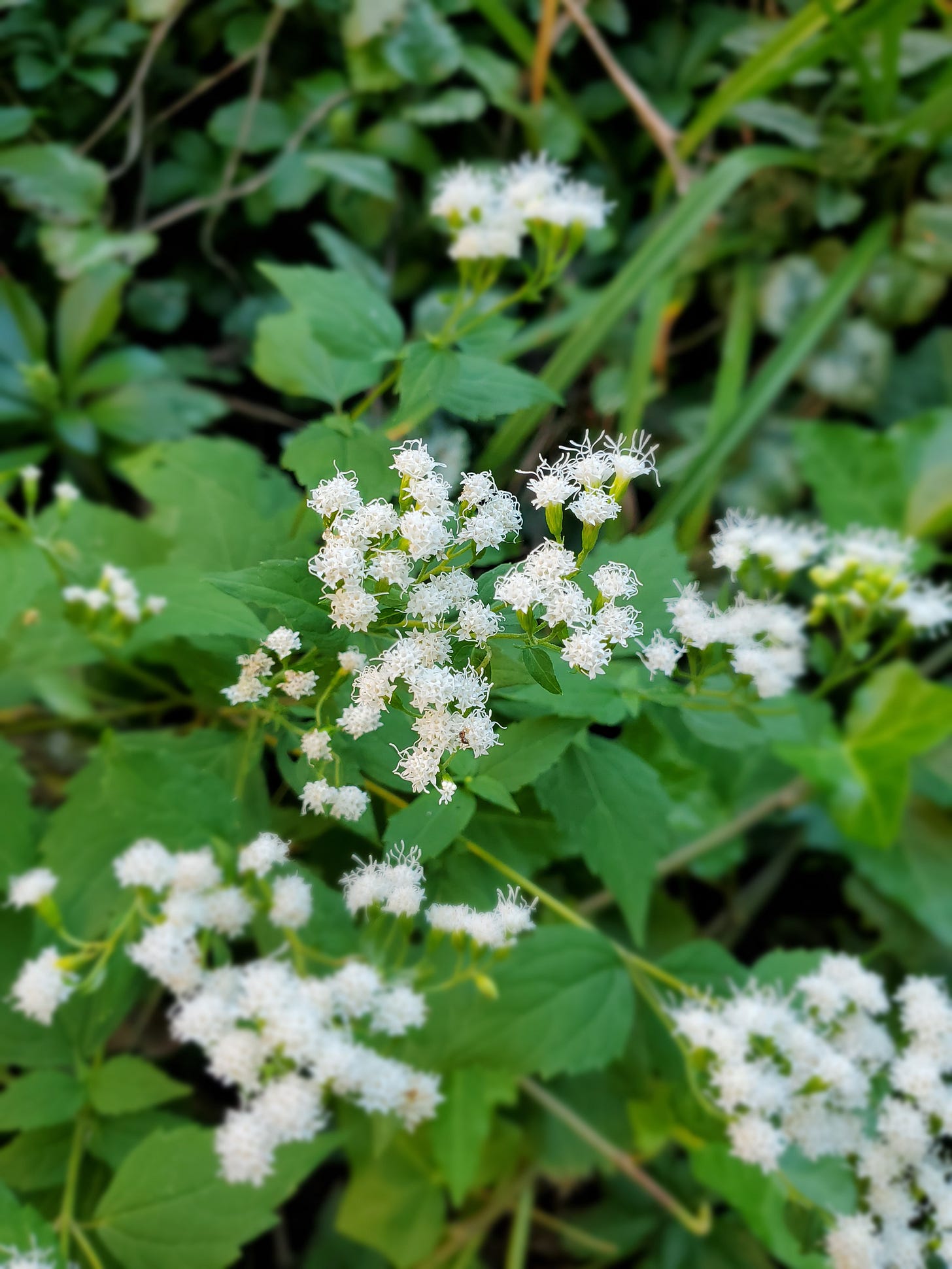Snakeroot
Not just a clever title but the name of a native plant
The Plant that started it all
How do I, a turf manager working on a golf course, get to the place where I am trying to look at other alternatives for lawns? (Thats a nice way of me trying to say think differently about your lawn) Shouldn’t I love the grass? I guess I came to the point where I needed a little variety in my life than just grass.
When I started at the golf course, there was some minor improvements just done. However, the edges of the rough (where your not supposed to hit the ball) going into the surrounding woods was completely covered in multiflora rose - a nice sounding nasty plant with thorns that is considered invasive. There was literally a wall of this stuff.
For whatever reason, I was the only dummy that couldn’t take it so I started taking out the vines, one by one. It was actually pretty satisfying when you cut one vine and you pull out like 25 feet of this thing. It was not satisfying when it broke apart. Gives me the shivers just thinking about it!
After tackling a section of this one winter, I was able to clear all the vines out. The very next fall, something miraculous happened, or just natural actually. White clouds appeared out of the ground everywhere the vine was! The vines must have prevented sunlight from allowing the this plant to germinate, so when they were gone, an explosion of this plant appeared.
At the time, I did not know what this plant was. Way back in the olden days before the iNaturalist app, I googled “plant with white flowers on edge of woods”. I was able to find a match and it turned out to be this White Snakeroot. (Ageratina altissima) When I dug a little deeper, I found out that this plant is considered native, and that is what germinated my interest in native plants and the industry of ecological restoration or landscaping.
Plant Pile
In this section, I just want to highlight a few articles regarding Snakeroot. Instead of writing a long article, I will link to other people’s great work.
Brooklyn Botanical Garden's Weed of the Month
Is Snakeroot responsible for the death of Abraham Lincoln’s mother? It turns out, this plant caused a lot of trouble!
Dr. Eckel is local to my area and has great descriptions of native plants. Here is one on Snakeroot.
Takeaway
If you are considering allowing some of your lawn to go “wild” and you see Snakeroot slithering around your yard, it can give you some clues as to what you can do.
Snakeroot lives typically on the edges of woodlands and into the woods. So if you see it, you may want to buy plants that are of a similar ecotype (other plants that live in similar situations)
If you see it, and you don’t have a fence, that means the deer don’t eat it! Big problem in New Jersey and beyond. So congratulations! You have a deer resistant plant!
Snakeroot is also in the Aster family, which means there may be other plants in that family that you can put into your yard that have a smaller chance of getting browsed by the deer. But do your research!
Finally, as I reflect on this experience, I had no idea Snakeroot would appear the way it did after getting rid of those vines. It came out of nowhere. So, I leave you with a song that has nothing to do with plants, but the title is fitting:



